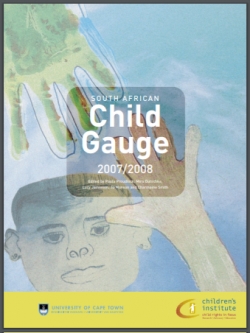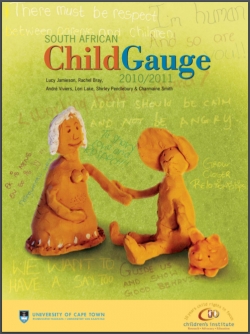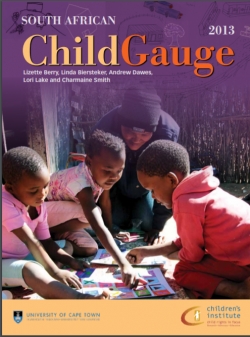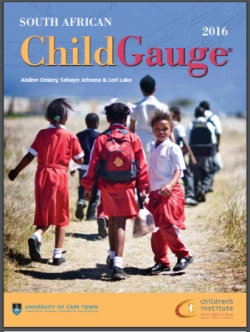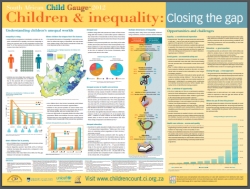South African Child Gauge 2017
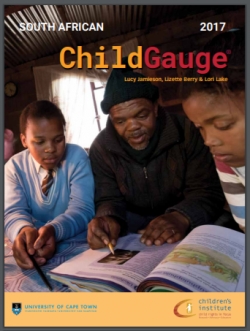
Buy online ($)
Type
E-Book
Authors
ISBN 13
9780620777599
Category
ECCE
[ Browse Items ]
Publication Year
2017
Publisher
University of Cape Town, Children's Institute, Cape Town, South Africa
URL
[ private ]
Pages
140 p.
Subject
Early childhood development, Sustainable Development Goals (SDGs), Transformation, Vulnerable children, Disadvantaged children, Poverty, Government policy, Legislation, Child-centred data, South Africa
Tags
Abstract
‘This Child Gauge brings together nine essays that shed light on progress, and sometimes the lack thereof, towards the fulfilment of children’s right to survival and development. The authors of the articles range from academics and researchers to representatives from civil society and government. Each piece is based on research and evidence that contributes to – and resonates with – global discourses, challenges and strategies to promote children’s survival and development. This issue of the Child Gauge is very timely and relevant, as implementation of the SDGs has started in earnest, with the first few Voluntary National Reviews already underway, and South Africa, therefore, needs to reflect deeply on how the implementation of the SDGs can contribute to the creation of a South Africa that is fit for all children. The essays emphasise a South African context that is often characterised by poverty, and health system failures that continue to compromise children’s survival and development; where schooling outcomes remain poor despite high attendance; and where the interpersonal relational needs and emotional well-being of children are neglected. The impact of insecurity on children’s development across the life course, and failure to ensure substantive equality especially for children with disabilities are further challenges. The five key priorities, namely education, health and nutrition, caring relationships, safety, and inclusion rightly echo the aspiration in the preamble to the UNCRC that “the child, for the full and harmonious development of his or her personality, should grow up in a family environment, in an atmosphere of happiness, love and understanding”. Some of the main messages – the benefits of a child rights approach to development; the added value of equity and evidence-based programming; robust data to identify the children who are missing out; a holistic understanding of survival and development that also recognises children’s evolving capacities; and community engagement for stronger systems for health, education and protection, deserve a serious attention by all stakeholders, in particular, policy-makers.’ [Foreword]
Number of Copies
1
| Library | Accession No | Call No | Copy No | Edition | Location | Availability |
|---|---|---|---|---|---|---|
| Main | 724 | 1 | Yes |
